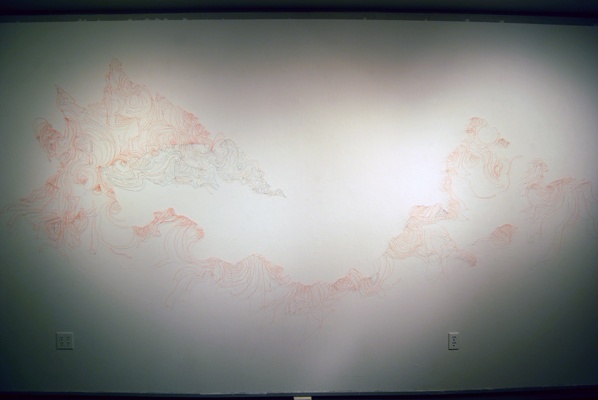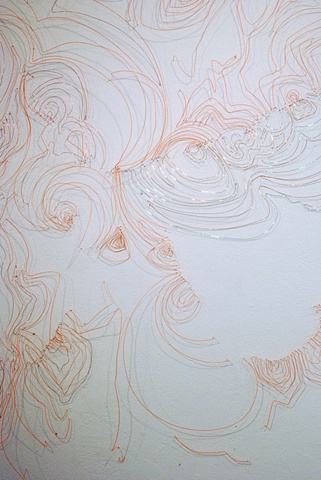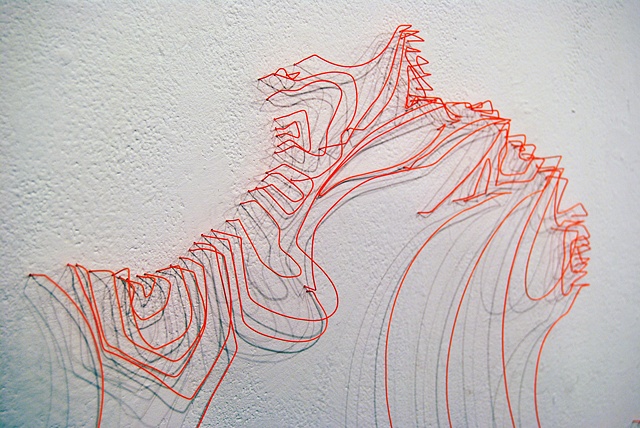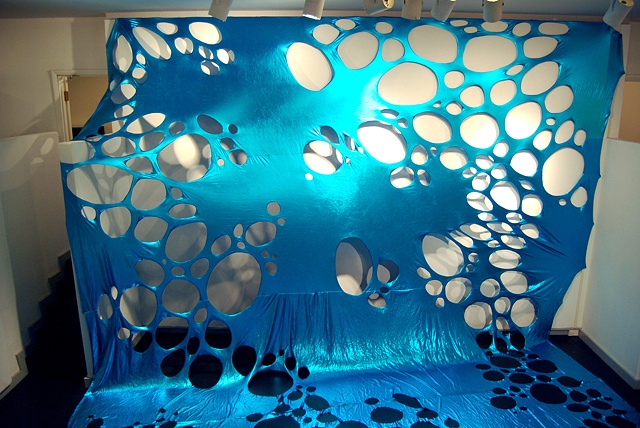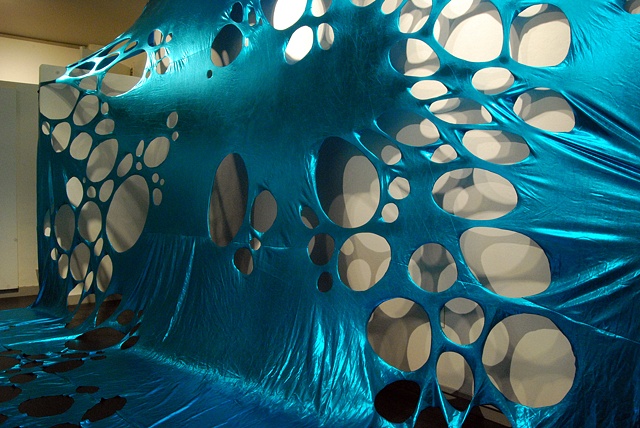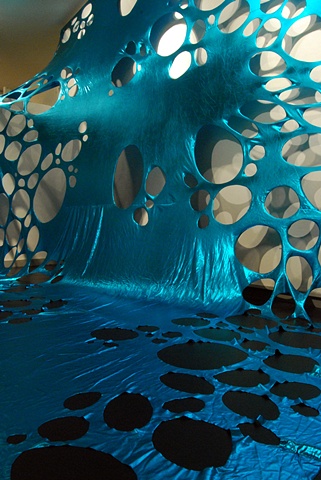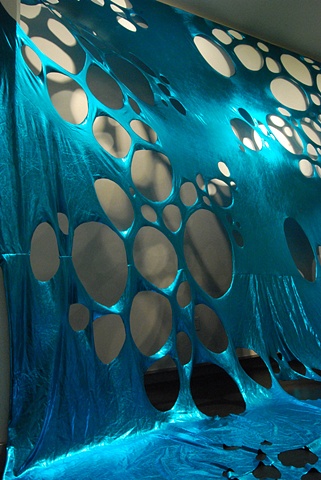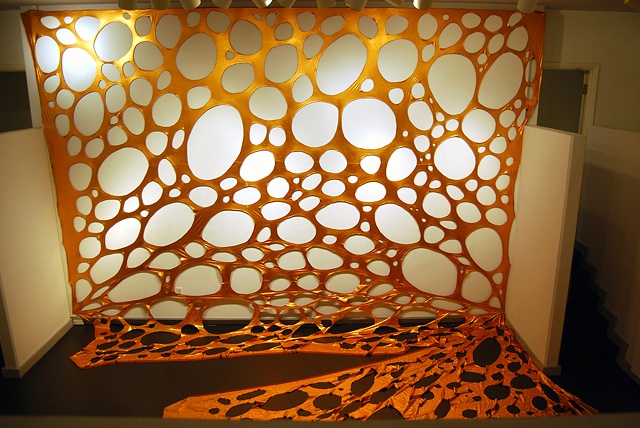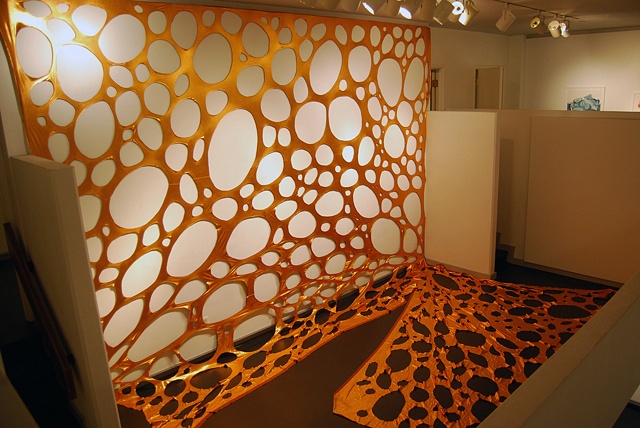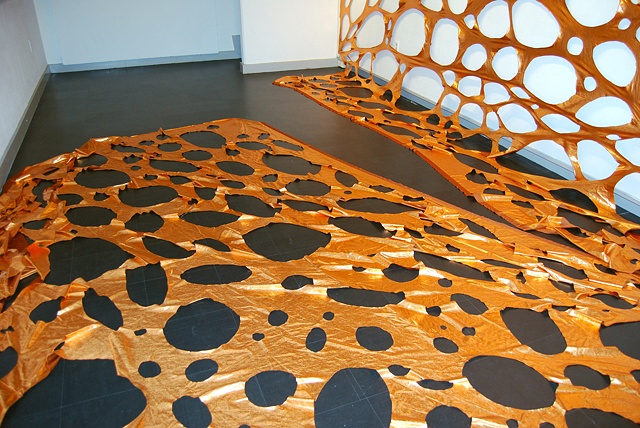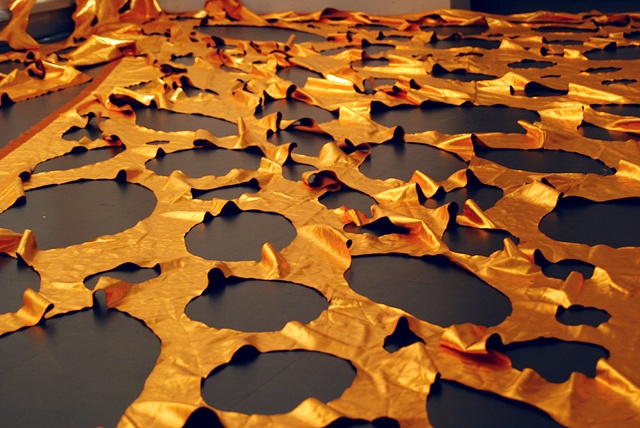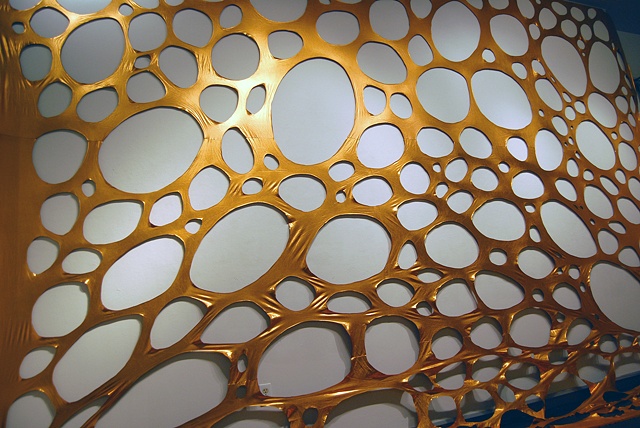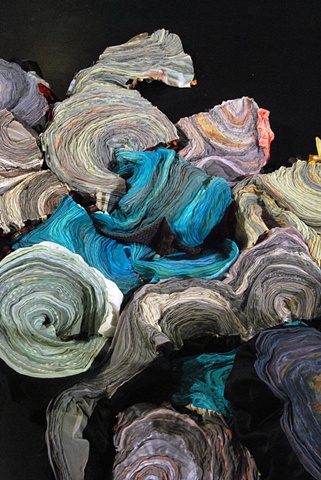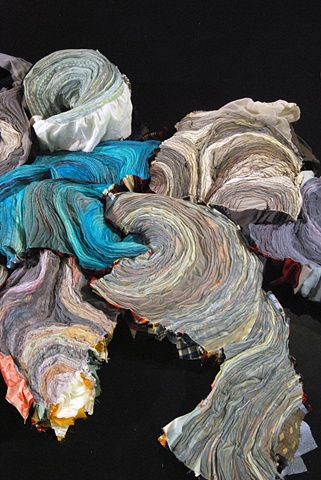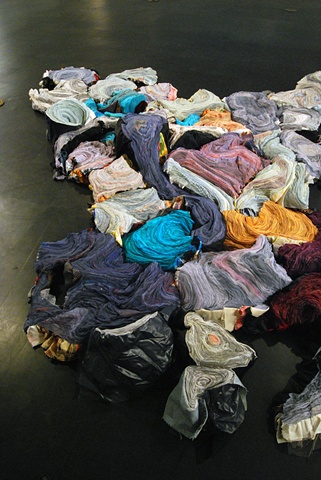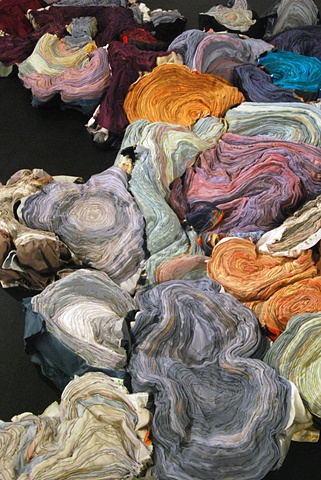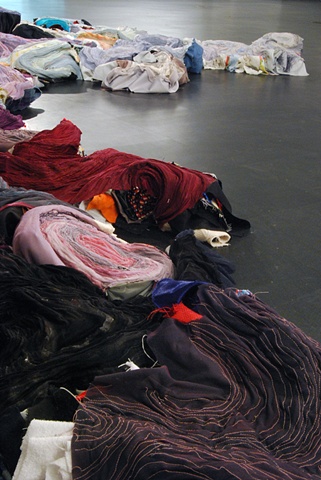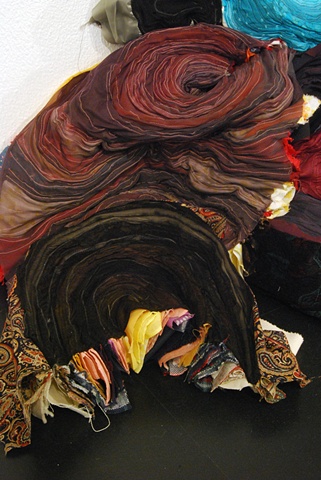Personal Geographies, 2009
2009 Solo exhibition at Murray State University in Murray, KY
• Permeate (an excerpt from Jeremy Biles' catalog essay Permeations : Personal Geographies)
A strange, even discomfiting, pleasure is one likely response to Amy Honchell’s “Personal Geographies,” an exhibition of work as alluring as it is disconcerting, at once clever and profound, playful and inscisive. Heterogeneous in techniques and materials, but coherent in sensibility and arrangement, Honchell’s work is wide-ranging in its sources and acute in its execution.
One is tempted to characterize it in the favored parlance of the day—as exemplifying the collapse of boundaries separating disciplines, methods, and cultural registers. “Collapse” has been a primary metaphor for expressing the relations between “high” and “low” in postmodern art and culture. Boundaries that had long separated the popular from the refined, and the masses and from the elite, have, we are told, collapsed, crumbled. And gone, too, are the strict divisions between the disciplines. To be postmodern is to be postdisciplinary.
But Amy Honchell’s work suggests something slightly different. At once supporting and subverting boundaries between disciplines, methods, ideas, and cultural distinctions like “high” and “low,” her art does not so much produce the po-mo “collapse” that is now de rigueur as it reveals and re-construes borders, reveling in their shifts, flows, and permeability. This is not collapse but crossing, not eradicating borders but permeating them.
In fact, permeability is a key concept in Honchell’s practice, where photography, drawing, sculpture, and the manifold processes of fiber art variously juxtapose, intermingle, and inflect each other. Honchell—who, not incidentally, teaches a course called “Permeable Membranes” in the Fiber and Material Studies program at the School of the Art Institute of Chicago—neither constrains herself narrowly to any single discipline, nor routinely enacts the contemporary postdisciplinary emphasis on hybridity.
Rather, Honchell’s work playfully but purposefully shifts and reconfigures boundaries between disciplines, methods, and histories (her art has emerged in relation to the discourse of feminist art but is in no way confined by it), while punching holes in the membranes separating high from low, inside from outside, self from other. Making prominent use of materials mass-produced or of modest origin—donated fabrics, rumpled from disuse; compellingly gaudy dollar-store flotsam; wall-sized swathes of cloth with alluring sheens—Honchell permeates the gallery with enigmatic forms, while presenting a variety of techniques and methods that, especially when juxtaposed, reveal their mutual interpenetration: drawing is sculpting is sewing is cutting....
At the same time, what “personal geographies” implies, as both the title of a show and a body of work, is a crossing-over of the personal and the public, inner experience and outer expression, depths and surfaces. Each of these mixes with, influences, or saturates the other: a further mode of permeation.
Inverting the famous definition of God referred to in St. Augstine’s Confesssions, one might say that “Personal Geographies” comprises (without containing) a group of techniques and artifacts whose centers are nowhere and whose circumferences can be anywhere. The conceptual, technical, and cultural boundaries in Honchell’s work are many but porous: her containers leak: and in leaking, they communicate, with the gestures and matters of one discipline, idea, or cultural register connecting with, building upon, and permeating those of another....
